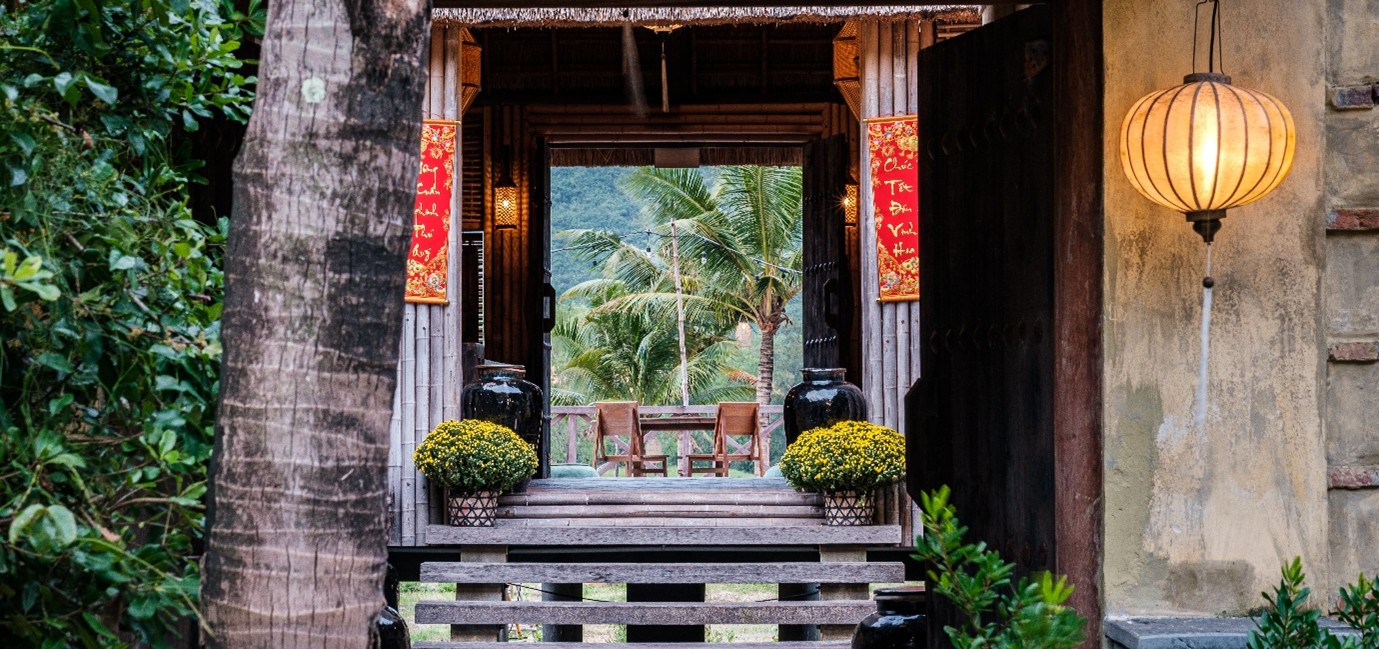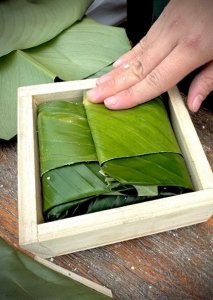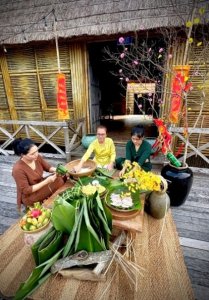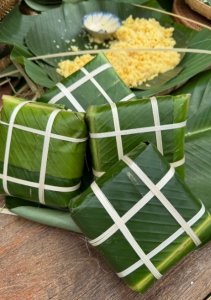The story of Bánh Chưng and Bánh Tết
Posted on by ZannierHotels
Zannier Bãi San Hô honors Vietnam's Tết traditions - The story of Bánh Chưng and Bánh Tết
As Lunar New Year approaches (Tết Nguyên Đán or more commonly Tết, Zannier Bãi San Hô, nestled in the heart of Phu Yen, celebrates one of Vietnam's most treasured culinary traditions – the story of Bánh Chưng and Bánh Tết. These beloved Tết cakes, deeply rooted in the Vietnamese culture, represent the warmth and unity that make this holiday so special. From its pristine coastal setting spanning 98 hectares, Zannier Bãi San Hô embraces the rich heritage of Vietnam, where the tradition of these special cakes dates back to the 6th century BC. Just as the resort honors local culture through its thoughtfully designed villas and commitment to the surrounding community, these traditional cakes tell their own story of Vietnamese heritage and family bonds.

Traditional making process

Bánh Chưng, born from the legendary creativity of Lang Lieu, son of the sixth Hung King, carries deep symbolism in its square shape and carefully chosen ingredients. The sticky rice, green beans, and pork, lovingly wrapped in dong leaves, represent the precious gifts of the earth and the enduring connection between heaven and earth. In the southern regions of Vietnam, Bánh Tết emerged with its distinctive cylindrical shape, adapting the tradition while maintaining its heart.

The making of these cakes remains a cherished part of Tết celebrations, bringing families together for hours of preparation and storytelling. The process, requiring 4-6 hours of careful cooking, fills homes with both fragrant steam and shared memories, as knowledge passes from one generation to the next.

Just as Zannier Bãi San Hô stands as a guardian of Vietnam’s natural beauty and cultural heritage, these traditional cakes serve as guardians of family tradition. Placed reverently on ancestral altars, shared between neighbors, and given as gifts of respect and love, they embody the spirit of Tết and the warmth of Vietnamese hospitality. Both Bánh Chưng and Bánh Tết cakes will be served during the Tết season at the resort, that is also having a special programme for the occasion.
Recipe
1. Prepare the Ingredients
- Sticky rice
- Green beans
- Pork belly or other cuts of pork
- Spices (salt, pepper, and optional seasonings)
2. Prepare the Filling
- Soak the sticky rice and green beans in water for several hours (preferably overnight).
- Grind the green beans into a fine paste or coarsely mash them, depending on your preference.
- Season the pork with spices, ensuring the flavors are well-balanced
4. Cook the Cake
- Place the wrapped cakes into a large pot filled with water.
- Boil the cakes for 4–6 hours, ensuring they remain fully submerged throughout the process. Add more water as needed.
3. Wrap the Cake
- Layer the sticky rice, green bean paste, and seasoned pork into sections.
- Wrap the mixture tightly using dong leaves (for Bánh Chưng) or banana leaves (for Bánh Tết), ensuring the cake is well-sealed. Use string to secure the wrapping.
5. Cool and Serve
- Allow the cakes to cool completely before slicing and serving.
- Bánh Chưng is traditionally square, while Bánh Tết is cylindrical.
Enjoy these iconic Vietnamese treats during the Lunar New Year or on special occasions!